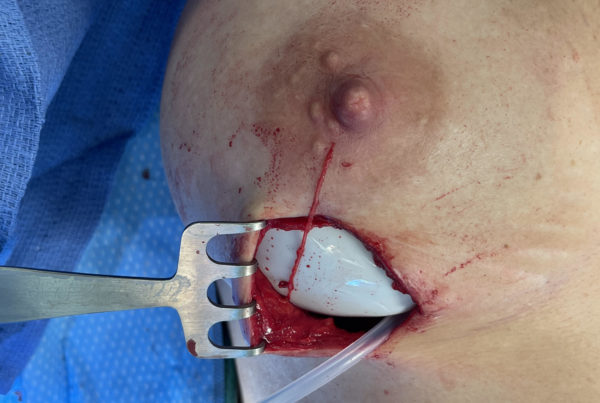I hear this question a lot from just about every patient I see, whether for chronic headaches or tarsal tunnel syndrome. The answers have to do with the technical aspects of the surgical procedure, the physiology of peripheral nerves as well as the wound healing process itself. As you can imagine, a compressed nerve is usually compressed on all sides because it is a three-dimensional structure. Therefore, when decompressing a nerve, it has to be manipulated such that the superficial, deep, medial, lateral, cranial, and caudal aspects of the nerve can be examined and released if necessary. In addition, there are often multiple compression points (the GON has up to 6 that have been described and often others that are noted intra-operatively). Moreover, there are times when there is intra-neural scarring (scarring within the nerve, not just around it) which also requires removal. Hence, there is a fair bit of manipulation usually required (albeit with microneurosurgical techniques) during any decompression procedure.
As part of the normal wound healing process, there is swelling. The more neural manipulation required during the operation, the more swelling of the nerve you’re likely to have post-operatively. I tell my patients to think of nerves as electrical wires, pure and simple. All they do is conduct electrical signals back and forth, but it is the brain that interprets these signals as ‘hot’, ‘cold’, ‘painful’, ‘ticklish’ etc. Therefore, if you think about pouring water into the drywall in your house near the electrical wires, it is likely that the lights will start to flicker on and off until the water dries up because the fluid is interfering with the electrical signals. In the same way, swelling of the nerve can result in all sorts of “unusual firing” of the nerve and is one reason many patients may experience weird, sometimes painful sensations post-op. However, if the nerves are going to recover, within a few weeks or months when the swelling has subsided, this “unusual firing” abates and the nerves “calm down”. Just like with cutaneous scars (which also swell as part of the healing process) the time for swelling to decrease is usually longer than a few days or weeks.
Another reason why nerves may take a while to recover has to do with the severity and duration of compression. I’m sure everyone has fallen asleep on their arm(s) at some point in their lives. Sometimes, when you wake up, your fingers are just a little numb and it takes about 10 seconds of shaking your hand to restore normal sensation. Other times, however, when you wake up the entire arm seems paralyzed, weak, and numb! In these cases, aside from some transient agita, it takes up to 1-2 minutes of shaking the arm out for function and sensation to return fully. Phew! The difference between these two situations is that in the latter, the compression of the nerves to the arm has been present for longer and may have been more severe as compared with the former. Therefore, it takes longer for sensation (and function) to return. Now take that phenomenon and stretch the timeline out months and often years – that is how long many peoples’ nerves have been compressed. Therefore, it can take weeks or months for function to return to “normal”. Also, since the blood flow to the nerves in the latter scenario has been compromised for a longer period of time, they become more engorged with blood after flow is restored and then that extra blood takes time to return to its baseline levels. It is for this reason that you often experience that sensation of tingling and pain after you remove pressure from the arm and as blood flow resumes. The same thing happens when blood flow is restored after decompression – (more intra-neural blood flow usually combined with more surgical manipulation). Finally, since we don’t immobilize our heads after surgery (doing so would just stiffen all the joints), the nerves will glide right away after we do all of these things to them and also likely contributes to the recovery process. The take-home message is that as patients and physicians, we have to be patient in assessing whether or not decompression has been successful as the final results may not be apparent for many months. After all, the same would be true of a facelift or breast augmentation.





